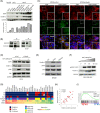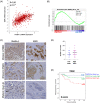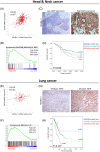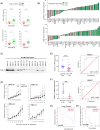Kindlin-1 modulates the EGFR pathway and predicts sensitivity to EGFR inhibitors across cancer types
- PMID: 35452191
- PMCID: PMC9029018
- DOI: 10.1002/ctm2.813
Kindlin-1 modulates the EGFR pathway and predicts sensitivity to EGFR inhibitors across cancer types
Figures




References
-
- Sin S, Bonin F, Petit V, Meseure D, et al. Role of the Focal Adhesion Protein Kindlin‐1 in Breast Cancer Growth and Lung Metastasis. JNCI: Journal of the National Cancer Institute. 2011;103(17):1323–37. - PubMed
Publication types
MeSH terms
Substances
LinkOut - more resources
Full Text Sources
Medical
Molecular Biology Databases
Research Materials
Miscellaneous
